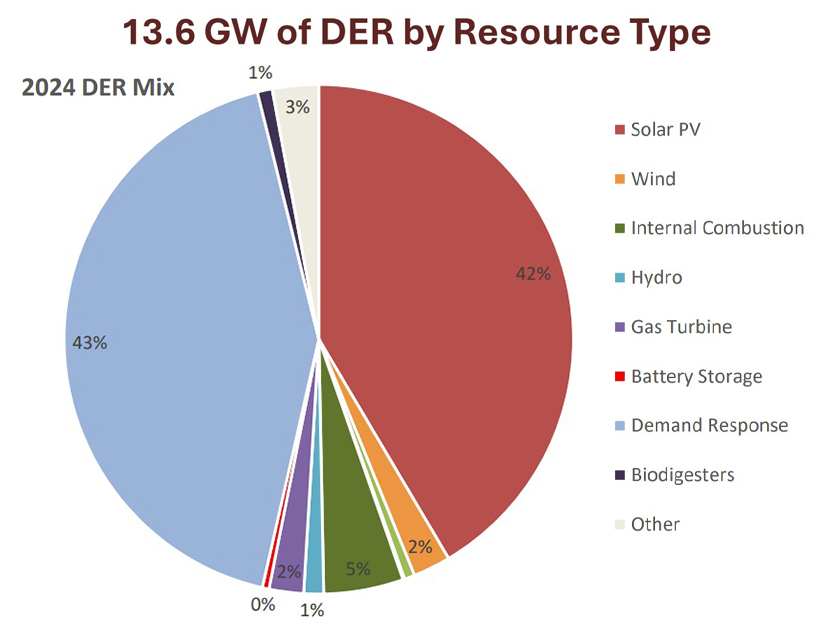By the Organization of MISO States’ count, MISO is up to nearly 13.6 GW of distributed energy resources in the footprint.
Results from OMS’s seventh annual DER survey, released Nov. 18, showed an approximate 1-GW growth from the total 12.5 GW of DERs OMS tallied in MISO in 2023. (See Annual OMS DER Survey Records 1-GW Rise in MISO Residential Capacity.) OMS has been recording 1-GW gains in MISO DERs since 2022. Unlike last year, virtually all the DER gains in 2024 came from non-residential sources.
Of the counted DERs, OMS said almost 3.1 GW comes from residential sources, representing a less pronounced, 140-MW climb year-over-year. OMS continues to find that solar and demand response are the most popular forms of DERs across all MISO planning resource zones, constituting 42 and 43% of survey totals, respectively. The organization said, once again, non-residential DERs that are registered with MISO account for the most capacity.
Similar to results from 2023, OMS found the bulk of DERs in Minnesota, Wisconsin, the Dakotas’ Zone 1 and Michigan’s Zone 7. Zone 1 contains about 3.45 GW, while Zone 7 plays host to about 2.75 GW. Those zones individually boast more DER capacity than OMS found systemwide in its first DER survey in 2018 at 2.58 GW.
Mississippi’s Zone 10 once again has the least amount of DERs, OMS found, at just 67 MW.
OMS said several utilities responding to this year’s survey “noted a need for state regulatory direction and the benefits of a common data-sharing platform” for DERs. OMS itself has stressed the need for MISO to take the lead on creating an information sharing platform for DERs as part of the RTO’s compliance with Order 2222. During its board meetings, some OMS members have said MISO’s lack of a standardized system for coordinated DER data sharing is a glaring omission as MISO prepares to accept DER aggregations into its markets.
OMS said most utility respondents reported they’re either implementing or considering implementing advanced metering, demand-side management, a DER management system or another form of improved communication to better use DERs. Most also said their state’s DER interconnection standards need to be updated. Still, the majority said they’re not seeing transmission impacts because of DER growth.
At a Nov. 11 OMS board meeting, Executive Director Tricia DeBleeckere said this year’s DER survey probably showed more DERs because: more utilities responded to the survey; DERs have grown in number; and utilities likely have better tracking and awareness of the resources on their distribution systems.




